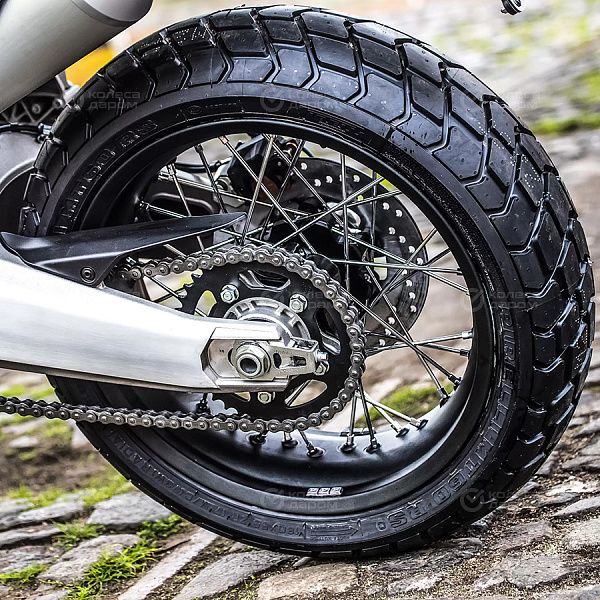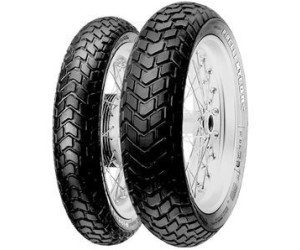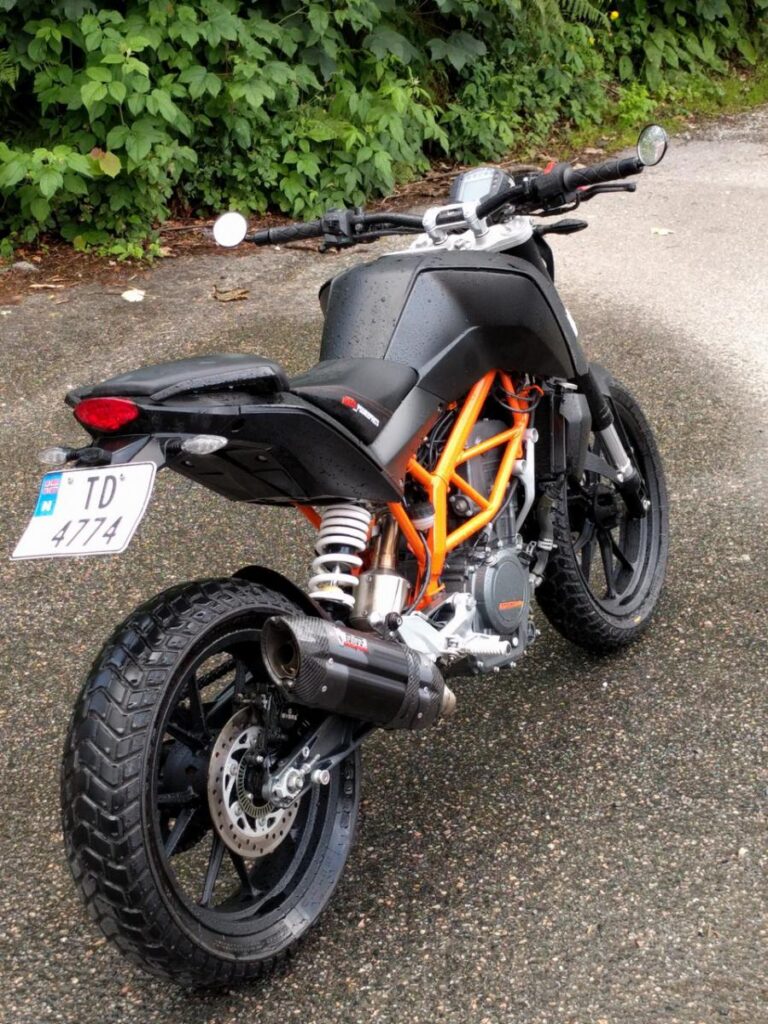The Pirelli MT 60 RS: A Closer Look
I embarked on a journey to comprehensively review the Pirelli MT 60 RS, and I can’t help but draw frequent comparisons to a traditional street tire like the S20. Why, you ask? Well, most people generally opt for the conventional tire choice for their supermoto, but today, I aim to shed light on the distinctive advantages and potential pitfalls of choosing the MT 60 RS.
Understanding the Pirelli MT 60 RS
Before diving deeper, it’s imperative to understand the essence of the MT 60 RS. Often termed a ‘scrambler tire’, it’s customarily associated with bikes like the Triumph Scrambler or the Ducati Scrambler. These are predominantly street bikes, yet many riders, including myself, occasionally venture onto gravel tracks. My own adventures comprise mostly street rides interspersed with light off-road excursions.
However, while navigating these paths, I’ve often found the tires lacking, even leading to a few mishaps in dirt terrains.
Expectations vs Reality
Tackling the rugged terrains of Taiwan often means confronting steep inclines. Given my experiences, I was in search of a tire that could offer better traction on off-road trails without compromising the cornering capabilities on regular roads. I wanted something resilient for gravel paths, 4×4 tracks, and other rudimentary terrains without aiming for hardcore enduro conditions.
After extensive research, the MT 60 RS appeared to be a promising contender. To say that they lived up to my expectations would be an understatement; they surpassed them. My initial rides with these tires were met with the characteristic ‘wobble’ of knobby tires at slower speeds.
This made me tread with caution, especially while leaning into turns, as I was uncertain about the grip they’d offer. But over 800 kilometers of varied terrain, from mud to abundant road rides, these tires have been nothing short of remarkable. The on-road performance remained uncompromised, and they stood their ground impressively during off-road endeavors. From aggressive leans to throttling out of turns, the tires provided unwavering stability.
Performance Analysis
The MT 60 RS has showcased its dexterity across terrains and conditions. The initial sensation of being on a knobby tire quickly fades as you begin to trust its capabilities. Their performance, especially on roads, felt almost magical. Despite aggressive maneuvers and extensive road usage, these tires held their ground without squirming or budging. Their firm grip and stability, even in dirt and muddy conditions, make them a versatile choice for riders who seek the best of both worlds.
On-Road Prowess of the Pirelli MT 60 RS
One of the striking features of the Pirelli MT 60 RS is its on-road capability. At first glance, with its prominent grooves, one might assume that it provides less surface area on the road compared to conventional tires. Yet, in practice, the difference is negligible. I’ve pushed the MT 60 RS to its limits, just as I would with any other tire, and the stability was commendable. It’s worth noting that my observations are based on rides during January in Taiwan; the weather, although not too cold, was cool. I’m curious to see how the tire would perform in the peak of summer, especially if it gets hot enough for the rubber to start balling up.
Off-Road Capabilities
The Pirelli MT 60 RS isn’t merely an on-road wonder; its off-road capabilities are equally impressive. From navigating 4×4 tracks, rocky terrains, to single tracks, this tire rarely let me down. The few challenges I faced were less about the tire and more about factors like the bike’s street suspension, its gearing, and admittedly, my off-road riding skills. In essence, the tire rarely proved to be the limiting factor in my off-road adventures.
Limitations and Comparisons
While the MT 60 RS is a versatile tire, it’s essential to remember it’s not a traditional knobby tire. When making those sharp turns on a 500cc, delivering 50 horsepower to the back tire, I felt the limitations. Realistically, even at a quarter throttle, there’s noticeable sliding. This isn’t to say that these tires lack traction, but they definitely aren’t on par with full-fledged knobbies.
Mud terrains brought out another limitation of the MT 60 RS. Even with minimal mud exposure, the tire felt slick. Its design, particularly its width, makes it float on the mud rather than cut through it. Unlike a motocross tire with sharp knobbies designed to pierce through and find traction beneath, the MT 60 RS tends to glide over. However, this is expected from a tire that’s designed to be more of an 80/20 or 70/30 split between road and off-road terrains. It isn’t a tire built exclusively for off-road challenges.
Rocky Trails and Overall Impressions
On the flip side, rocky trails were a delight. Keeping pace with friends riding on bikes with full knobbies was a breeze. The Pirelli MT 60 RS handled the rugged paths efficiently, ensuring both the bike and I had a joyful ride. The overall experience with this tire, given its versatility, has been overwhelmingly positive.
Initial Impressions and Brake Dynamics
Upon using the tire for the first time, I approached its capabilities with caution. Particularly, the front brake commanded my attention due to its robust 320 disc and the four-piston Brembo. The sheer power of this combination could easily make the bike stand on its nose on asphalt. Given the substantial bite it offers, there’s always that underlying concern of the front tire locking. This led me to rely more on the rear brake, which provided decent deceleration. However, when descending hills, I cautiously started incorporating the front brake with just a single finger, and contrary to my initial fears, it didn’t wash out. As I leaned into turns and exerted throttle, the front tire remained trustworthy, not giving away unexpectedly. Overall, this gave me confidence in the tire’s performance.
Durability Concerns and Internet Talk
One looming question remains: how long will this tire last? There’s chatter on the internet suggesting it doesn’t have a particularly long lifespan. However, one must contextualize this information. Many compare its durability to trail techs or Continental trail attacks, which are adventure tires designed to last up to 20,000 kilometers. For perspective, my S 20 front tire is expected to last approximately 8,000 kilometers, given that the rear lasted about 4,000 kilometers. When compared to these numbers, I anticipate the Pirelli’s longevity won’t disappoint.
The Price Point of Pirelli MT 60 RS Corsa
If there’s a notable drawback to these tires, it would be their cost. Priced at 200 US dollars for the front and 260 for the rear, they translate to 6,000 and 8,000 in Taiwanese dollars respectively. For some perspective, a set of other tire brands might cost around 9,000 NT or roughly 280 US dollars. Essentially, the cost of a single Pirelli tire equals that of an entire set from another brand. Yet, it’s worth noting that Pirelli, along with brands like Michelin, command a premium price for their products. These are luxury tires, and they come with the promise of unmatched performance.
Conclusion: Is the Pirelli MT 60 RS Corsa Worth It?
The Pirelli MT 60 RS Corsa, with its impressive performance dynamics, especially in braking and maneuvering, surely stands out in the tire market. However, its premium price tag is something prospective buyers need to consider. While some may argue that there are more affordable options in the market, the Pirelli brand brings with it a legacy of quality and unmatched performance. As with any premium product, the question isn’t just about cost but value. And for those who prioritize performance, safety, and brand reliability, the Pirelli MT 60 RS Corsa might just be an investment worth making. It not only meets the high expectations set by its price but often surpasses them, proving that sometimes, you truly get what you pay for.






